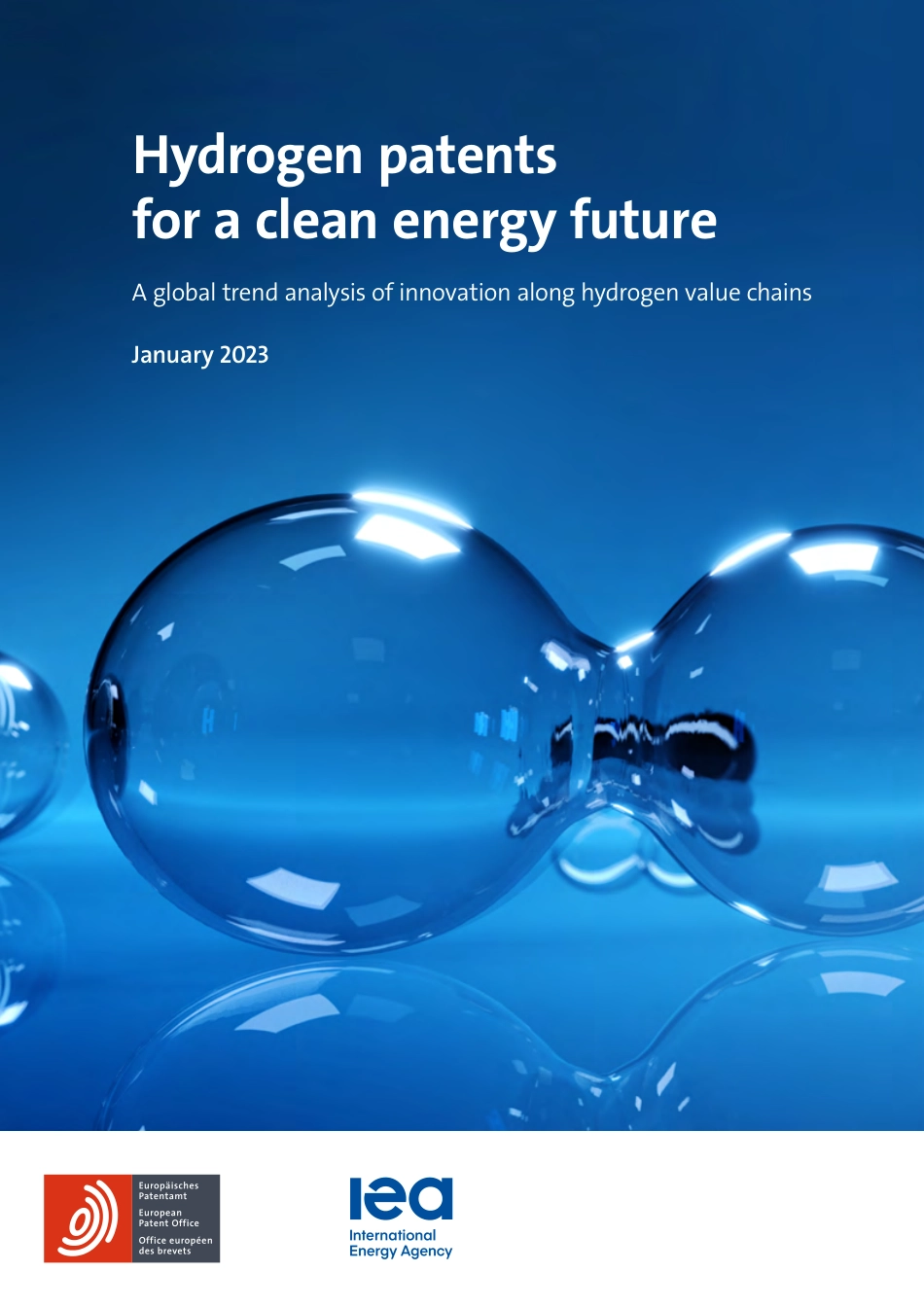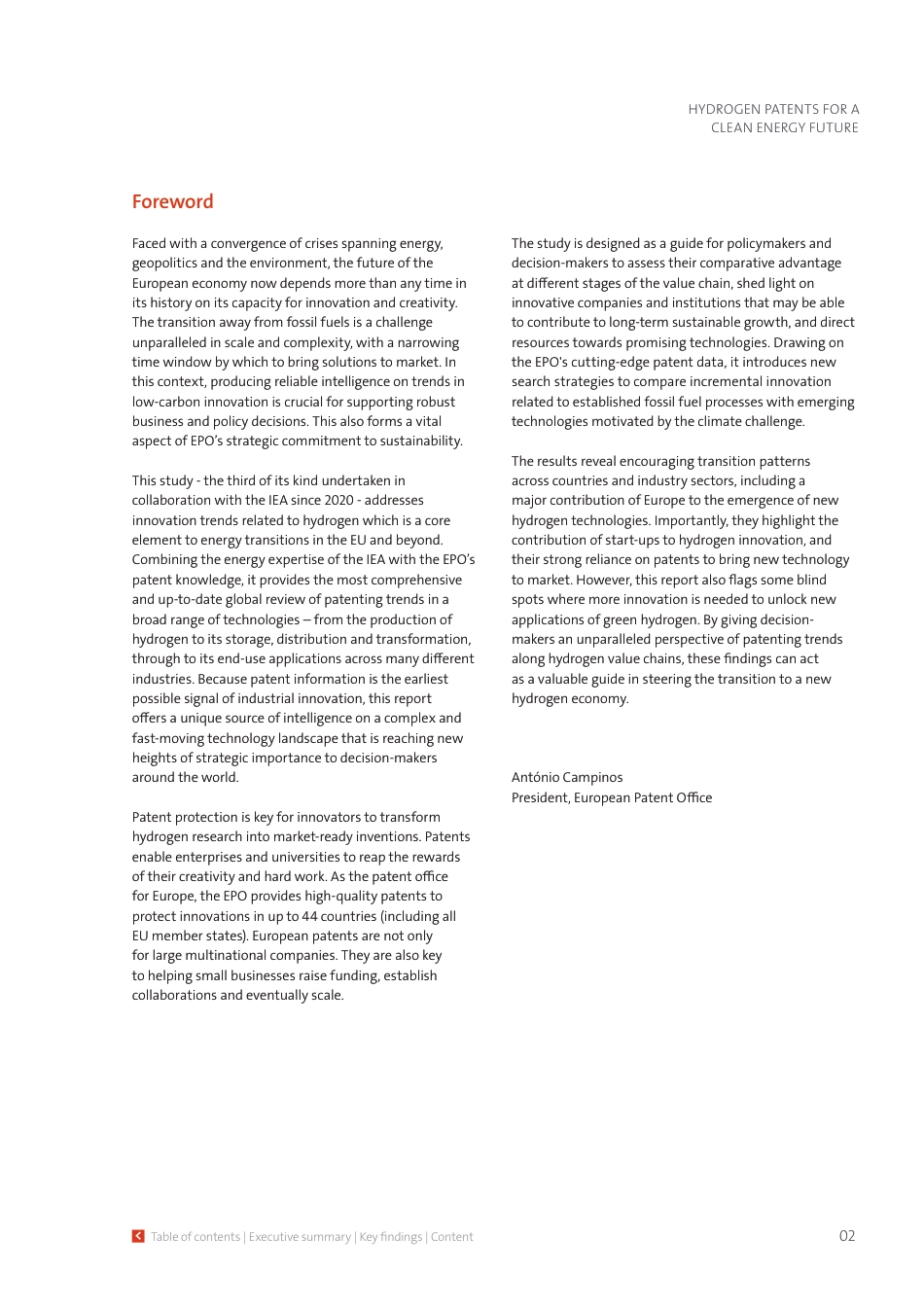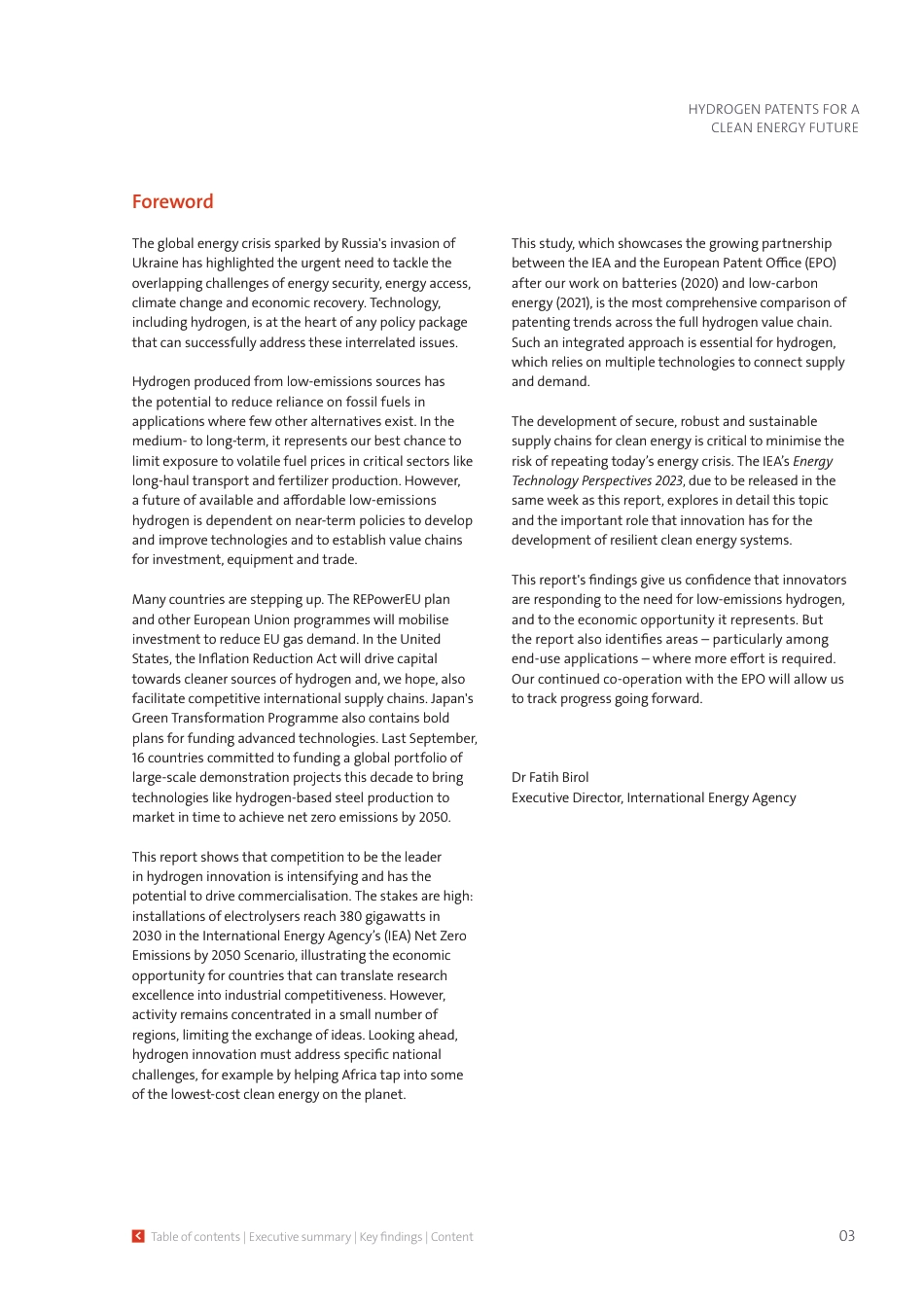Hydrogen patents for a clean energy futureA global trend analysis of innovation along hydrogen value chainsJanuary 2023HYDROGEN PATENTS FOR A CLEAN ENERGY FUTUREepo.org | 02Foreword Faced with a convergence of crises spanning energy, geopolitics and the environment, the future of the European economy now depends more than any time in its history on its capacity for innovation and creativity. The transition away from fossil fuels is a challenge unparalleled in scale and complexity, with a narrowing time window by which to bring solutions to market. In this context, producing reliable intelligence on trends in low-carbon innovation is crucial for supporting robust business and policy decisions. This also forms a vital aspect of EPO’s strategic commitment to sustainability.This study - the third of its kind undertaken in collaboration with the IEA since 2020 - addresses innovation trends related to hydrogen which is a core element to energy transitions in the EU and beyond. Combining the energy expertise of the IEA with the EPO’s patent knowledge, it provides the most comprehensive and up-to-date global review of patenting trends in a broad range of technologies – from the production of hydrogen to its storage, distribution and transformation, through to its end-use applications across many different industries. Because patent information is the earliest possible signal of industrial innovation, this report offers a unique source of intelligence on a complex and fast-moving technology landscape that is reaching new heights of strategic importance to decision-makers around the world.Patent protection is key for innovators to transform hydrogen research into market-ready inventions. Patents enable enterprises and...



